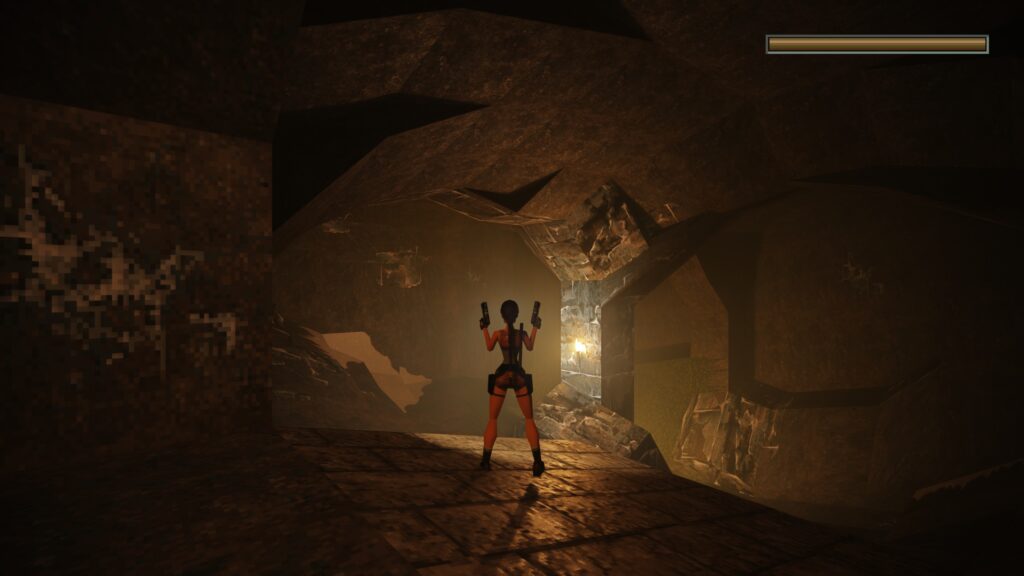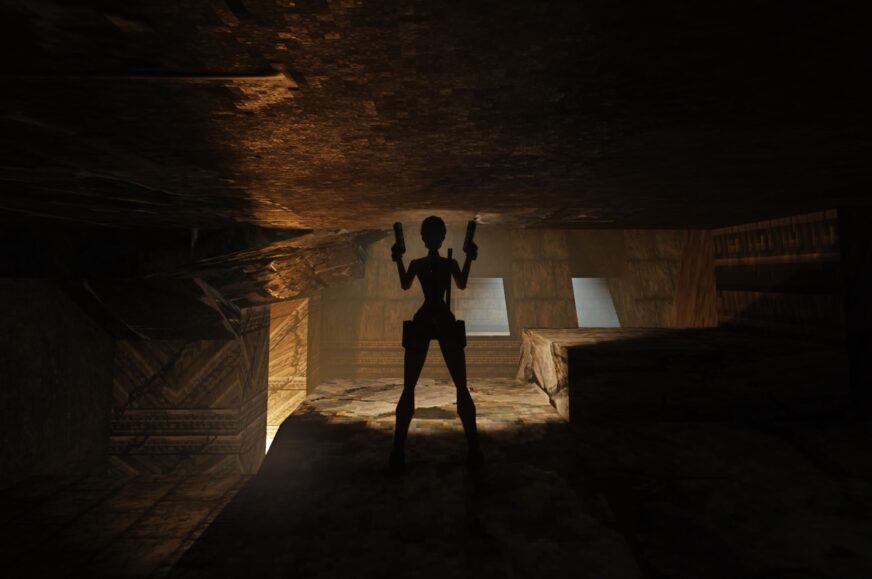Conclusion
Sometimes people say that today’s games don’t measure up to the old ones and don’t offer much besides visuals. But what if modern visuals could be added to classic games that are even twenty years old? NVIDIA’s RTX Remix technology (or software) is supposed to do just that, making it relatively easy to add better graphics to even very old games using a mod – including raytracing effects and things like DLSS or DLAA. Let’s see how it works.
Conclusion
It’s probably not entirely appropriate to judge the quality of mods that are mostly in their infancy at this point. However the effect that RTX Remix is able to add to the game is still very promising.
But the technology itself is certainly remarkable and it’s a good idea, especially as we can already see that it can and does work in practice and can be of great benefit for enthusiast remasters or remixes of games. There are a number of games whose authors or owners will probably never give us any official facelifts and improvements, or games for which even the source code or assets such as models and textures have been lost, making that impossible barring a full rework from scratch.
Remix allows you to make modifications to the game practically from the outside without any need to have the original source materials and development tools available, and that’s a powerful tool. It has its limitations, as shown by the flashlight trick the games use, for example. It’s part of the RTX Remix runtime and not the original game, so while you can turn it on with a hotkey, it adds light to your rendered game that comes out of nowhere and isn’t integrated in any way. Getting your in-game avatar to actually pull out a flashlight and have it shown probably isn’t within the power of RTX Remix (though for FPS games where you just need a single object that doesn’t need to be connected or interact with anything else, such look could probably be successfully faked.
In any case, there are reasons to look forward to what will come of this venture. Hopefully development of mods will continue successfully and users creating modifications will have a make a good use of it. Perhaps there will even be madmen who would try to remix the giant open-world game that is Morrowind as in the demo that was shown during the technology’s debut.
Is the looks all that is being improved? Yes, but that’s not a small thing
Going back to that sentiment that modern games often don’t have much to them besides great expensive visuals, while they are empty and soulless behind them — even when comparing Portal to Portal with RTX, it’s tempting to remark that all that Remix RTX brings is just nicer outward appearance, while the gameplay mechanics and content don’t improve in any way.
However, the experience of the added ray tracing (although this is subjective and some may argue that the reception of a period game as it actually looked in its time has its merits) is visually quite pleasing. However, if you argue that today’s games lack more than just graphical eye-candy compared to the inventive qualities of classic titles, then actually the remixing of those classics is something that can put pressure on today’s production by making these old games, now in more attractive guise more accessible and better able to demonstrate the viability of their content itself.

After a brief taste of the original Tomb Raider in the original DOS engine with rudimentary 3D acceleration and textures and models appropriate to the wooden era of 3D gaming, I find the game somewhat unaccessible in this form – even as someone who actually lived through that era and did play those games back then. Accomodading to this look and being able to naturally navigate and move around in it is likely something that you lose over time. With RTX Remix’s rendition of the Open Lara RTX modification, you’re playing something visually different, but on the other hand, this way you have a better chance of appreciating that level design that was praised at the time (albeit at the cost of slightly distracting elements like having to add the flashlight tool to the game).
In this form, younger audiences are more likely to appreciate why Tomb Raider gained such a fame and cult following in its day, and are more likely to understand why did the original (and how iconic in its day!) design of the protagonist get such an impact, without is looking so absurd in comparison to the heroine in the modern reboots.
However, we don’t mean to condemn the original versions of the games. As mentioned, they belong to the history and present the one and only original character of the game. Just as preservationists have come to understand that it makes sense to protect and preserve old works of art and architecture instead of tearing them down or remaking them in the random currently popular style of the day, we must not “erase” the original, but accept remixed games as an alternative to it. However, compared to the insensitive and destructive way in which, say, the “enhanced” edition of Baldur’s Gate 1 was made, I find Portal with RTX’s handling quite good. But it’s also true that the technological level of the original Portal is good enough that the game doesn’t cry out for a facelift as desperately as the original Tomb Raider does.

It’s quite interesting how much ray tracing lighting can help, even if the original primitive models and textures are left in the game, as mentioned in the Tomb Raider visual review. While this doesn’t take advantage of all the possibilities of the RTX Remix technology, it actually does, at least on the surface, seem like an interesting approach to make a game remaster: preserving the assets makes it a very responsible and original-respecting way, while still making an archaic game more digestible, and this doesn’t require heavy invasive changes that risk destroying the soul and style of the game.
On performance in RTX Remix games: Even the GeForce RTX 4080 Super is not an overkill
Full ray tracing with RTX Remix is very demanding on performance. Don’t be fooled into thinking that since you deal with a game fifteen years or more old under the hood of a mod, it should run like a champ on modest GPUs. We tested performance with the second fastest GeForce RTX graphics card of the current generation (the RTX 4080 Super), which is inferior only to the GeForce RTX 4090 in performance, but we still found that you practically must rely upscaling.
In Portal RTX, you need a GeForce RTX 4080 Super to achieve 50 FPS at native 1920×1080 pixel resolution without frame generation (but minimum FPS will be lower). It’s only with DLSS Quality that you’ll get to exactly 60 FPS. Without ray tracing, you get hundreds of FPS in the original game, and you’re probably only limited by the CPU (performance is around 290 FPS regardless of resolution).
At higher resolutions you are basically doomed without DLSS, especially in 4K where native FPS in Portal with RTX are close to being in the single digits. To get 60 FPS in 4K, you already have to combine enabled frame generation with DLSS Balanced (as you’re already below 50 FPS with Quality). On the plus side, it’s good news that you don’t have to downgrade all the way to Ultra Performance – but that’s probably inevitable with lower end graphics cards models. And the lower or older the GeForce RTX you have, the lower the resolution and FPS it will be able to handle.
At 1440p resolution, the performance of the GeForce RTX 4080 Super is more promising, and with DLSS Quality including frame generation, the average (but not minimum) values are over 100 FPS. Without frame generation, you still can’t get to 60 FPS while staying at DLSS Quality (56.9 FPS on average), but it seems that with DLSS Balanced, 60 FPS could be achieved even without frame generation (we didn’t test this combination).
You’ll only get really high FPS at 1440p and 1080p resolutions when you simultaneously use frame generation which doubles the screen frame rate (but of course you have to remember that these are just interpolated frames, so it’s not exactly ideal to have 60 FPS after Frame Generation, since that means the game is realistically rendering 30).
Even for simpler mods, there is a full performance tax for full ray tracing
And it’s not just Portal with RTX, although it’s actually a bit more challenging than other games. Even the Max Payne and Tomb Raider mods end up having pretty similar requirements, where at 4K you basically need to play with DLSS Balanced plus frame rate generation enabled (but that only means you get basic 60 FPS, which isn’t ideal when it’s after frame rate generation) and for 1440p you still need to use at least DLSS Quality with frame rate generation.
In FullHD, however, you can almost play in native resolution (almost 60 fps) or with DLSS Quality (60 fps) without using frame generation. Frame generation added gives you almost double the FPS.
There are some differences in the performances of the three games. Tomb Raider is a bit faster than Max Payne and Portal with RTX is a bit more challenging than both of the fan-made mods. However, the differences aren’t that big, we’re not talking about a 2x difference for example. So it looks like for ray tracing via RTX Remix, resolution is going to be the main performance variable, while the complexity (or in Tomb Raider’s case, primitiveness) of the environment and scene objects won’t make much of a difference, since there’s still a similar heaps of rays per pixel to analyze. This is probably why even ancient games become slow – their textures and polygons don’t matter much in the end, the performance is completely dominated by ray-tracing calculations that are analysing rays, meaning what matters is how many rays are in the scene, which seems to depend mostly on resolution when using RTX Remix, not the hardware demands of the original game.
English translation and edit by Jozef Dudáš
The testing graphics card Aorus RTX 4080 Super Master 16G, but also other GeForce RTX 4000 Super graphics cards are available in stock at Alza.de. Thank you for the cooperation!
⠀
⠀⠀
- Contents
- RTX Remix?
- How to get ray tracing into old games
- Visual analysis
- How we tested
- Gaming performance in Portal with RTX
- Gaming performance in Max Payne (with RTX)
- Gaming performance in Tomb Raider with RTX
- Conclusion









